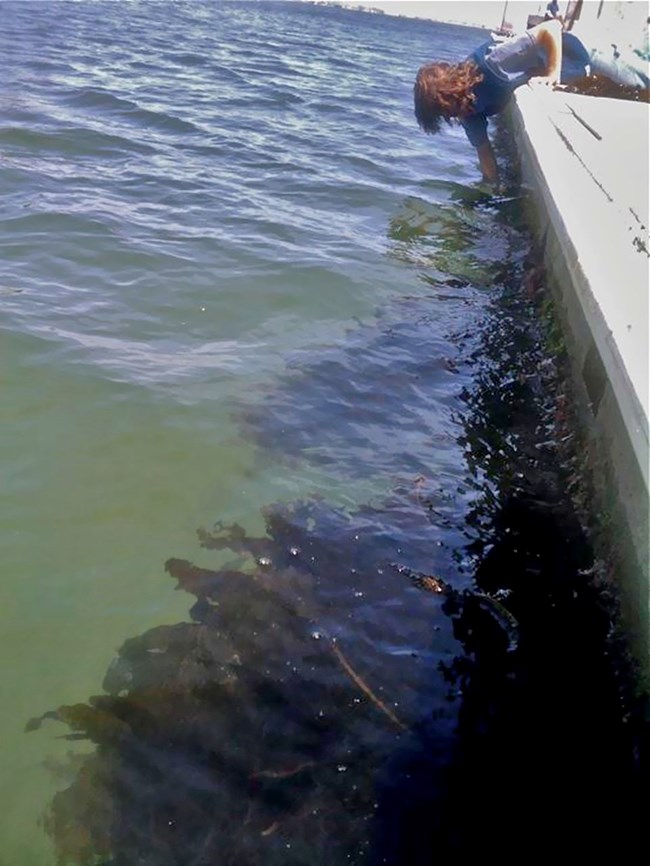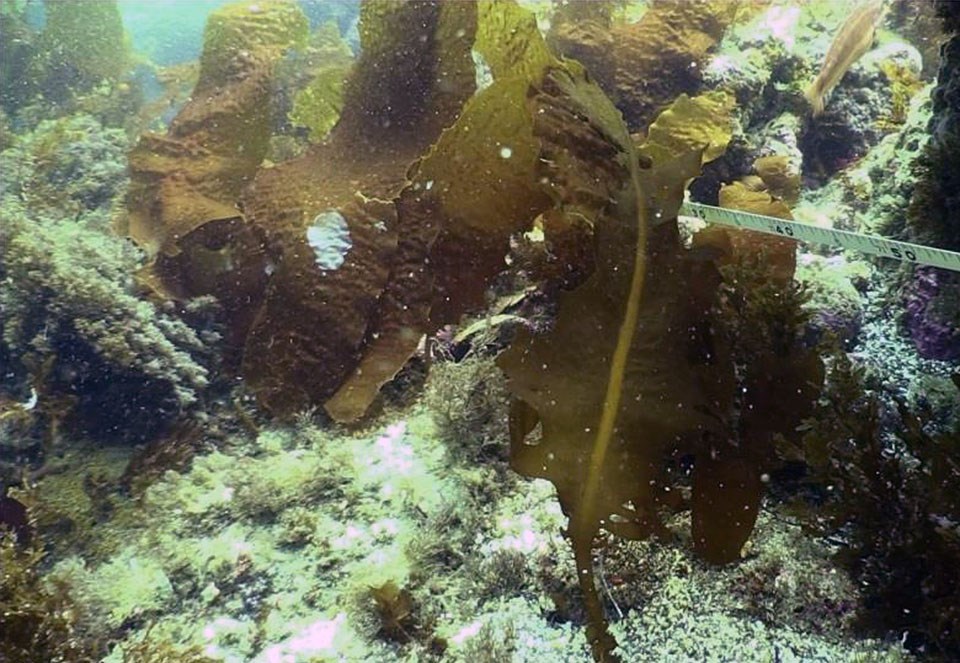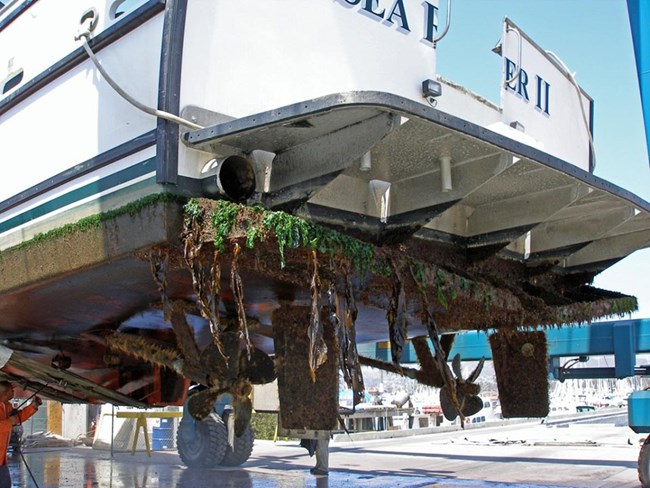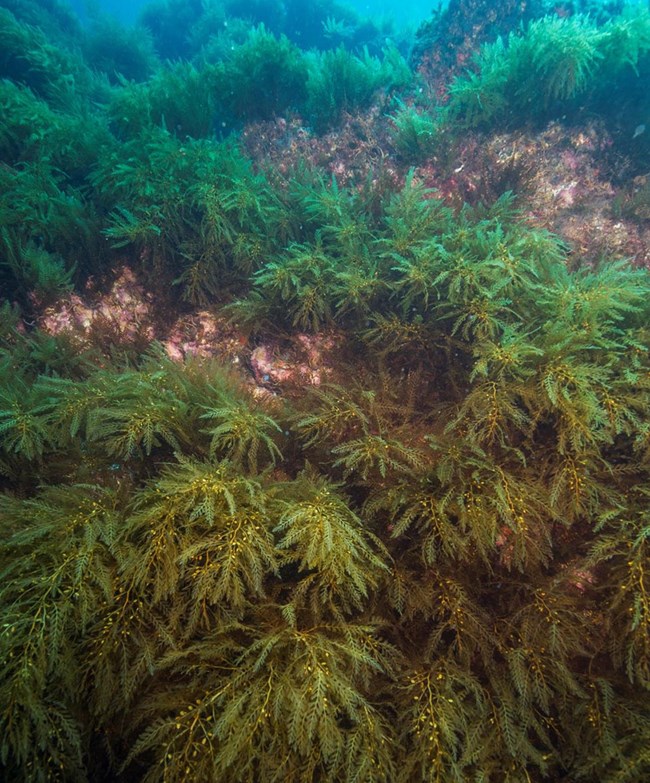Last updated: June 29, 2017
Article
Invasive Kelp Spreads into New Territory

Undaria was first found in California in 2000 in Long Beach Harbor. Since then it has been inadvertently carried by boat to other harbors up and down the California coast. It hitchhiked to Catalina Island and Channel Islands Harbor early on. In 2008, it was discovered in Ventura Harbor, the mainland home of Channel Islands National Park. Soon after, the park created outreach materials such as dockside posters to educate local boaters on how to recognize and prevent the spread of this invader. The park’s islands seemed to remain infestation-free. Then, in June 2016 Kelp Forest Monitoring Program (KFMP) biologists discovered the invader during their annual survey of a monitoring site on the north side of West Anacapa Island. An even more recent Undaria discovery took place at San Clemente Island to the south of the park this June.

NPS

As KFMP continues to assess the infestation, they have also evaluated potential control and extermination actions. Part of their evaluation has involved measuring a few tagged Undaria plants in Ventura Harbor. This gives biologists a sense of local growth rates. Although the data is limited, so far it seems that the local lifecycle is quite fast. The young plants studied reached maturity in as little as 2-3 months, and mature plants started dying at about four months of age.
The KFMP has also looked at efforts to control Undaria elsewhere in California and around the world. They have found that any attempt at eradication or long-term control is highly unlikely to succeed, regardless of effort or cost.

NPS / Brett Seymour
The good news is that boaters can still help protect the Channel Islands from additional Undaria infestations by regularly checking and cleaning their vessel hulls, especially right before an island visit.
While Undaria is a recent arrival to Channel Islands National Park, it is not the first marine invasive species to take hold in park waters. Devil weed (Sargassum horneri) is an example of another Asian kelp that began spreading rapidly in Southern California in 2003. It now dominates large swaths of kelp forest habitat on several islands. Through their suite of monitoring protocols, the KFMP is continually documenting native and invasive species alike. In time, KFMP data will also help us understand how invaders like Undaria are impacting Southern California’s kelp forest community.
For more information on how to recognize and respond to Undaria, check out this fact sheet or visit http://undaria.nisbase.org/.
Prepared by the Mediterranean Coast Inventory and Monitoring Network.
